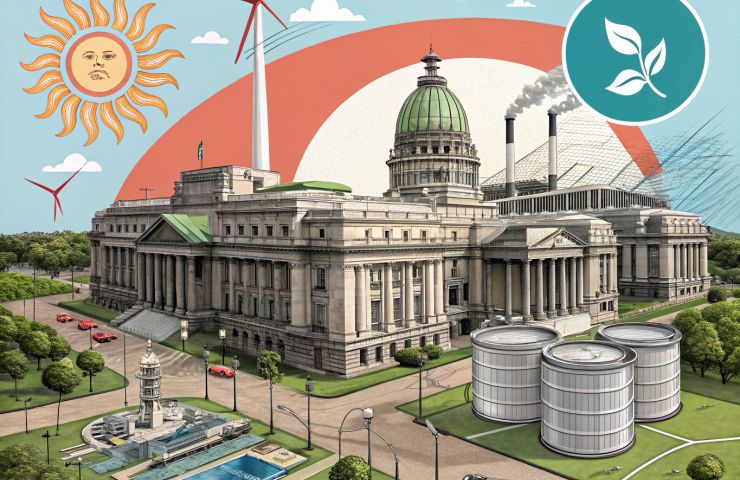
Argentina Energy Reforms: Green Hydrogen, Biofuels Law and Mature Basin Incentives Take Center Stage
October 27, 2025Argentina energy reforms take center stage in Congress. We’re talking an all-out biofuels law update, a brand-new rulebook for green hydrogen incentives, and fresh incentives for mature basin management. It’s not your average policy tweak—it’s a full-throttle push to refresh the energy mix, attract fresh renewable energy investment, and smash Argentina’s decarbonization targets.
With the world clamoring for cleaner power, Argentina can’t afford to sit on the sidelines. Lawmakers know it: these changes could catapult the country from old-school fossil fuels to a renewable energy pioneer.
What’s at Stake?
Argentina’s energy diet has been heavy on oil and gas for decades. Remember Law 27191 from 2015? It set a lofty 20% renewables goal by 2025, yet according to Argus Media, we’re still playing catch-up. Overloaded grids, sky-high financing costs, and rulebooks that shift on a whim have stalled new projects.
Meanwhile, aging fields in Golfo San Jorge and Neuquén are losing steam, putting jobs and local economies at risk. If these Argentina energy reforms don’t pack enough punch, investors will stay on the bench, consumers will grin and bear wild price swings, and the country’s climate promises could face a major rollback.
In provinces like Jujuy, rolling blackouts during peak seasons are all too familiar, and industries rack up hefty surcharges whenever grid reserves dip. A modern policy framework could trim costs, boost reliability, and keep the lights on for producers big and small.
The Magic Ingredient
Lawmakers aren’t offering half-measures. The draft package packs:
- Green Hydrogen Framework: Crystal-clear rules for making hydrogen by water electrolysis powered by wind, solar, or hydro—zero emissions at the source, full supply-chain transparency, and certification that meets global standards.
- Biofuels Law Overhaul: New blending mandates for biodiesel (think soybean and animal fats) and ethanol (corn and sugarcane), plus tax credits and streamlined permits to fire up plants in the Pampas and Northeast.
- Mature Basin Regime: Sweetened fiscal perks—royalty cuts, tax breaks, and faster environmental approvals—to extend the life of older fields, backed by digital monitoring and best-practice management tools.
These measures aim to unlock billions in fresh renewable energy investment, slash red tape, and lock in legal certainty for any project north of $200 million under the RIGI framework (Decree No. 70/2023).
Power Players Ready to Roll
Big names are primed to pounce. Air Liquide Argentina S.A., a titan in industrial gases, is gearing up to expand its electrolysis footprint, joining forces with local renewables developers to supply ultra-pure hydrogen to steel mills, refineries, and emerging fuel-cell markets.
On the hydrocarbon side, Petrolera Aconcagua Energía S.A. is set to tap those mature basin incentives. With new drilling and enhanced recovery techniques in Golfo San Jorge, the company could squeeze decades more hydrocarbons out of tired fields, while global majors re-evaluate their Argentina portfolios.
Then there’s the 500 MW BESS tender—this isn’t just about batteries. Picture long-duration storage units stationed alongside solar farms in San Juan and wind parks in Patagonia, laying the groundwork for round-the-clock green hydrogen plants running on firm, zero-emission power.
Behind the scenes, the Argentine Congress is racing the clock. The RIGI regime dangles 15–20 years of tariff stability—enough to reel in $200 million-plus projects without handing away the crown jewels.
Zooming Out
It’s not Argentina’s first rodeo in energy reform. After the 2015 sprint—when solar capacity leapt from zero to hundreds of megawatts and wind topped 2 GW—financial headwinds and a creaky grid threw everything off course. Now, with transmission upgrades and that new BESS tender on deck, the logjam could finally snap.
Back then, investors lined up like it was a sale. But the peso’s plunge and soaring interest rates dried deals up. Today, financing sweeteners under RIGI and modern grid assets mean momentum is roaring back faster than most expected.
The ripple effects will be massive: new electrolyzer assembly plants, thousands of construction and operations jobs, and a beefed-up logistics chain for feedstock and hydrogen exports. Oil-service firms can pivot, too—one day they’re propping up old fields, the next they’re installing cutting-edge electrolysis units.
Sure, some legacy players might grumble at fresh incentives, and politics can throw curveballs. But if Argentina nails this landing, it could slash diesel imports, boost rural economies, and stake out a leading spot in the global green hydrogen market.
The Road Ahead
The real test comes once the ink dries. Will Congress deliver a rock-solid, investor-friendly law or will horse-trading water it down? If the full package passes by year-end, expect a flood of announcements—green hydrogen plants sprouting across the Pampas, new biodiesel mills in Entre Ríos, and digitalized recovery schemes breathing life into mature fields.
International eyes are glued on Argentina. Europe’s green hydrogen standard—and partners from Germany to Chile—could open export doors if the pace stays hot. Ports like Bahía Blanca and Rosario are already gearing up for new bulk terminals, ready to dispatch hydrogen carriers abroad.
For executives, developers, and policy wonks, this is the moment to lean in. Argentina’s resource potential is world-class, but capital chases certainty. Stakeholders who jump in early can help chart a course toward a cleaner, stronger energy future. Ready to climb aboard?


 With over 15 years of reporting hydrogen news, we are your premier source for the latest updates and insights in hydrogen and renewable energy.
With over 15 years of reporting hydrogen news, we are your premier source for the latest updates and insights in hydrogen and renewable energy.